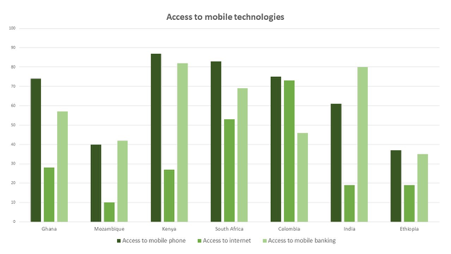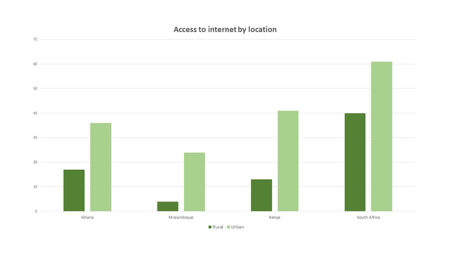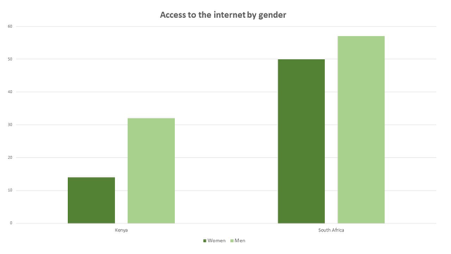Digital Technologies and the World of Work
By Sandiswa Mapukata
This is the first of three blog posts that will examine the relationship between digital technologies and work.
With the COVID-19 pandemic, remote work has become a fixture of the employment landscape. The pandemic has accelerated the use of digital technologies as workplaces introduce social distancing measures and the platform economy becomes increasingly important. Amazon recently announced that it would hire 3 000 new customer service workers in South Africa, taking the company’s total workforce to 7 000. In late June 2020, Amazon’s CEO Jeff Bezos added US $13 billion to his net worth in a single day demonstrating the increasing value placed on the digital economy. This has occurred within a context of growing unemployment. In South Africa, an estimated 2.8 million people lost their jobs between February and April 2020, two-thirds of them women.
Proponents of the digital economy argue that it provides a source of much-needed employment – particularly through the gig economy. Furthermore, they contend that workers get the flexibility to work when and where they want. Digital technologies play a key role in workers’ ability to participate in the digital economy. However, what is the extent of digital penetration across the global South? What are the barriers to digital penetration? What are the implications for how we think about digital technologies in the world of work? I will be addressing these questions in this post. Drawing on data from the Research ICT Africa 2017/18 Access Survey and World Bank, this blogpost explores these questions. It focuses on seven countries that are part of the Future of Work(ers) project: Kenya, Mozambique, Ghana, South Africa, India, Colombia, and Ethiopia.
The uneven nature of digital technologies, gender and spatial inequalities
Mobile penetration is highly uneven across the global South. In most countries, at least 60% of the population had access to some form of mobile phone technology, but Mozambique (40%) and Ethiopia (37%) trailed behind. There exist gender and spatial disparities in access to the various digital technologies. Globally, both men and women had equal access to mobile technologies in Colombia whilst India had the largest disparity between male and female users. Spatial variation in the access to mobile technologies was less significant with Mozambique having the largest disparity. Access to the internet did not vary greatly between men and women. Access to the internet had significant disparities between urban and rural populations with there being differences of at least 15 percentage points for Ghana, Mozambique, Kenya, and South Africa. Interestingly, South Africa was the only country where more women (70%) accessed mobile banking than men (68%). Unfortunately, information on the spatial disparity in the access to mobile banking was unavailable at the time of writing. Below we discuss these trends further.
Figure 1: Access to digital technologies

Data source: Research ICT-Africa 2017/18 Access Survey; World Bank
Using the metric of access to cell phone, most of the countries (with the exception of Mozambique and Ethiopia) had more than 60% of their population having access to some form of mobile phone technology. Access to the internet is more limited among the sampled countries. Besides South Africa (53%) and Colombia (73 %), the other countries reported less than 50% of their population having access to the internet. Access to mobile banking consisted of all the sampled countries having at least 30% of their population reporting some form of access.
Figure 2: Access to internet by location

Data source: Research ICT-Africa 2017/18 Access Survey
When disaggregating the data by gender, we focused on Kenya and South Africa. In both countries, the proportion of men that had access to the internet was higher than that of females. This was the case when we looked at access to the following: access to mobile phones, the internet, and mobile banking.
Figure 3: Access to internet by gender

Data source: Research ICT-Africa 2017/18 Access Survey
When we disaggregated the data by location, focusing on Ghana, Mozambique and South Africa. What we observe from the countries under review is that there was a disparity in access to the internet between the rural and urban populations. This demonstrates that inequalities in the access to digital technologies were largely spatially articulated as well. This difference was most apparent in Kenya, where 41% of Kenyans based in urban areas had access to the internet whilst only 13% of rural-based Kenyans had access to the internet. In Kenya and South Africa, the differences in access to mobile phones were less severe between urban and rural populations. This demonstrates the general accessibility of mobile phone technologies in the sub-Saharan African context.
Read the related Business Day Op-Ed

